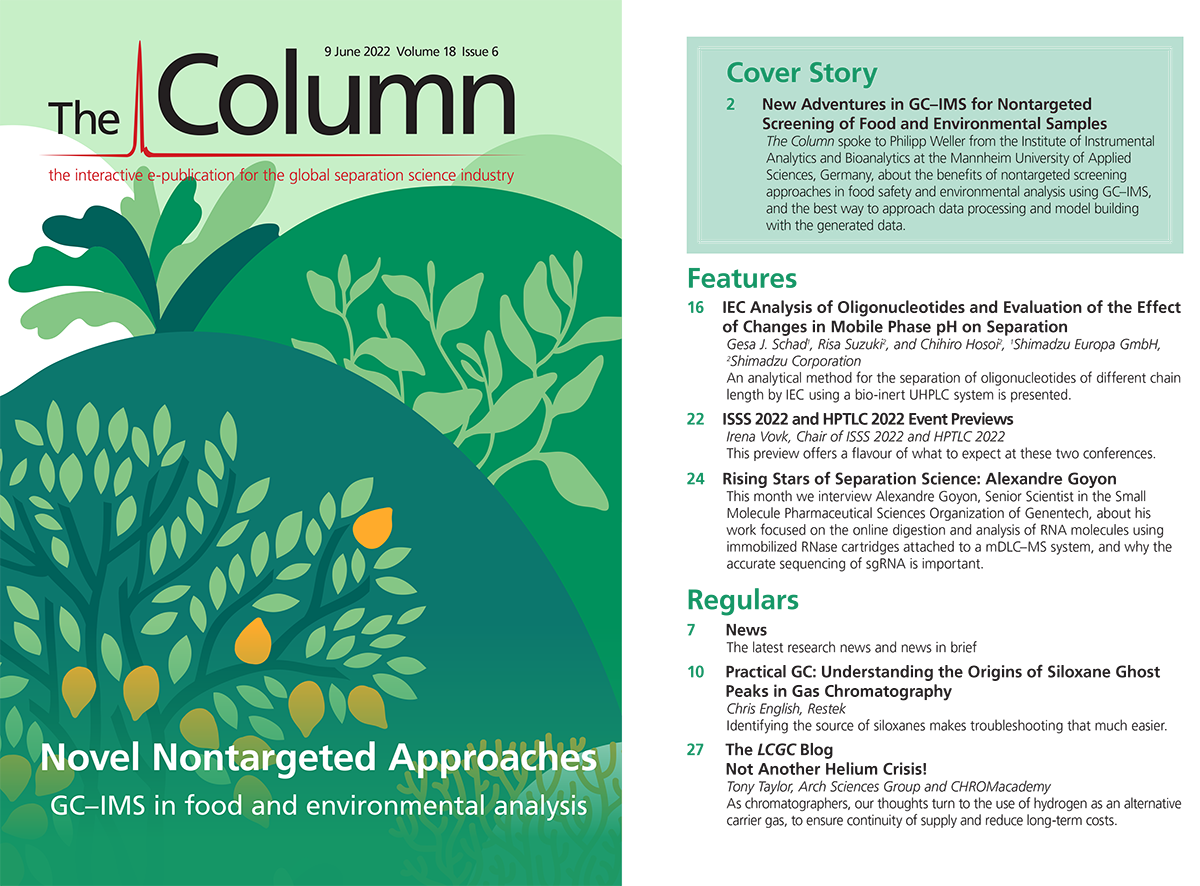Airborne PFA and FTS Detection Using Online SPE-LC–HRMS
Researchers have developed and validated a sensitive analytical method for the determination of 16 polyfluorinated alkyl substances (PFAS) in fine airborne particulate matter (PM2.5) using online solid‑phase extraction (SPE) coupled with liquid chromatography (LC)–negative electrospray ionization high resolution mass spectrometry (−) (ESI-HRMS) (1).
There is great concern over PM2.5, as these small particles can penetrate deep into respiratory systems, leading to cardiovascular and respiratory diseases as well as lung cancer. The World Health Organization (WHO) provides guideline values for PM2.5. However, PM2.5 mass concentration alone is not indicative of the risks from exposure to fine particles, as the toxicity of those particles is not accounted for. They are chemically complex and the typical composition of ambient PM2.5 particles contains thousands of individual organic compounds that can be extremely toxic, even when present at low concentrations. PFAS are one such class of contaminant to be concerned about in this regard. They were widely used in a broad range of consumer products and industrial applications for decades, and persist within an environmental context for a long time—even gaining notoriety as “forever chemicals”. Their use has been phased out in many countries, with less toxic alternatives replacing them; however, even these replacements, such as fluorotelomer sulfonates (FTS), have been found to persist in the environment, and there is emerging evidence that their impact on human health is similar to that of banned PFAS.
The analysis of PFAS in environmental samples is challenging because of trace‑level concentrations requiring highly sensitive analytical methods. Currently, only a few publications have reported analytical methods for the identification of PFAS in atmospheric samples; however, there are issues surrounding these methods, such as interference from matrix effects. As such, researchers aimed to develop a sensitive online SPE-LC–HRMS technique for the analysis of PFAS in atmospheric aerosol particles that would not only eliminate issues from previous methodologies but also expand the analyte detection range for 4:2 and 8:2 FTS’s, and utilize the developed method to analyze ambient PM2.5 samples collected in urban environments.
Results indicated that the developed method provided limits of detection (LODs) in the range 0.08–0.5 pg/mL of sample extract. This enabled detection of selected PFAS in aerosol particles at low fg/m3 levels, with a high tolerance to the considered PM matrix. When applied to the analysis of PFAS collected at two urban locations in Ireland, the method found several PFAS above the detection limit as well as FTS’s. The detection of PFAS in the environment despite them being phased out from productions in the European Union (EU) two decades ago only highlights their ability to remain in the environment for long periods of time. The detection of FTS’s also raises concerns about their suitability as alternatives to PFAS, with their potential impact on human health and environmental well-being yet to be fully explored.
Reference
- I. Kourtchev et al., Sci. Total Environ. 835, 155496 (2022).

New Method Explored for the Detection of CECs in Crops Irrigated with Contaminated Water
April 30th 2025This new study presents a validated QuEChERS–LC-MS/MS method for detecting eight persistent, mobile, and toxic substances in escarole, tomatoes, and tomato leaves irrigated with contaminated water.

.png&w=3840&q=75)

.png&w=3840&q=75)



.png&w=3840&q=75)



.png&w=3840&q=75)













